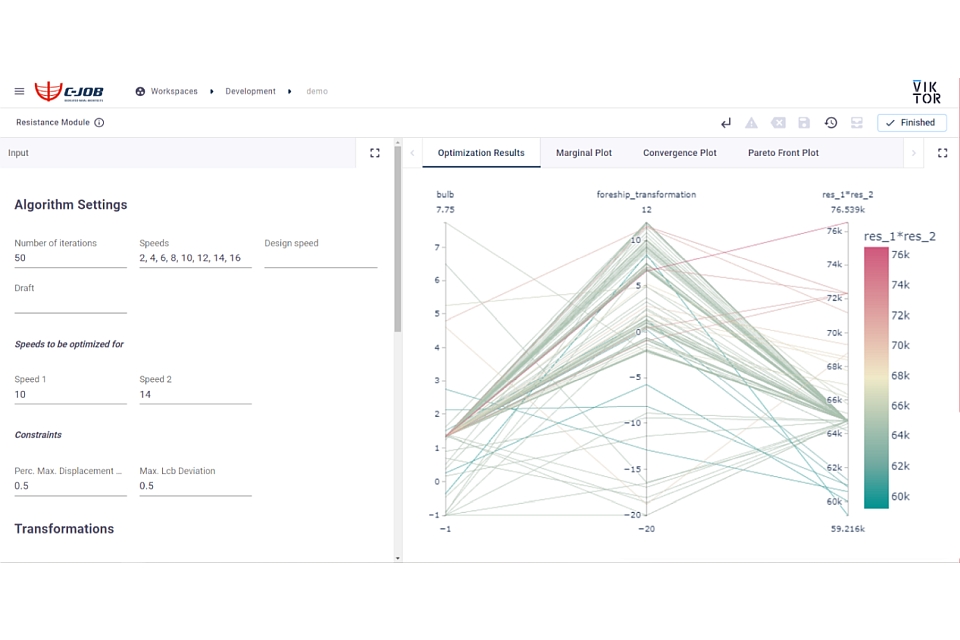C-Job Naval Architects, an independent ship design company, and VIKTOR, leading application development platform for engineers, have worked together on the ACD Resistance Module. This software tool optimises the hull design process, making it up to two times faster.
‘In the early phases of design, engineers must make decisions that can have an irreversible influence on later design stages,’ says Roy de Winter, R&D Engineer at C-Job Naval Architects. ‘Therefore, it is beneficial to make these decisions in a data driven way. An optimisation process is difficult and labour-intensive work, but is essential for a reliable and efficient result. Together with the VIKTOR platform, we were able to create a tool, the ACD Resistance Module, that automates this process and reduces building and operational costs.’
Optimised hull
The ACD Resistance Module optimises a ship’s hull based on its resistance, which in turn will result in superior building costs (CAPEX) and operational costs (OPEX) for shipowners. Together, this creates a ship design that ensures the highest quality design is delivered in the shortest amount of time.
By using the tool during this process, the chance of having to make changes later in the process based on key-decisions made earlier in the design is reduced to almost zero, allowing for a smoother process during the whole ship design.
One-stop cloud-based solution
With C-Job’s experience in R&D, data science, and coding, the company knew exactly what input was needed. As a software company with engineering DNA, VIKTOR helped them bring C-Job’s vision to life with their team of developing engineers that offer expertise and co-development throughout the process of turning the idea into a usable tool with Python (a high-level, general-purpose programming language).
De Winter: ‘Working together with VIKTOR, we were able to build an easy-to-use tool that combines all our knowledge into a one-stop cloud-based solution for our engineers.’
Accelerated concept design framework
The ACD Resistance Module continues to build on previous work by C-Job, namely the accelerated concept design framework. This framework uses simulation software in combination with in-house developed algorithms to generate optimised concept designs. The ACD Resistance Module uses the latest algorithms created by C-Job.
‘Multiple algorithms were created and then added to C-Job’s “toolbox” of optimisation algorithms. These algorithms allow for complex design problems to be optimized in significantly less time,’ explains De Winter.
The ACD Resistance Module operates via the VIKTOR platform, which offers a user-friendly interface where multiple users can work on projects. VIKTOR takes care of the user interface (UI), while C-Job’s domain knowledge is running behind the scenes.








